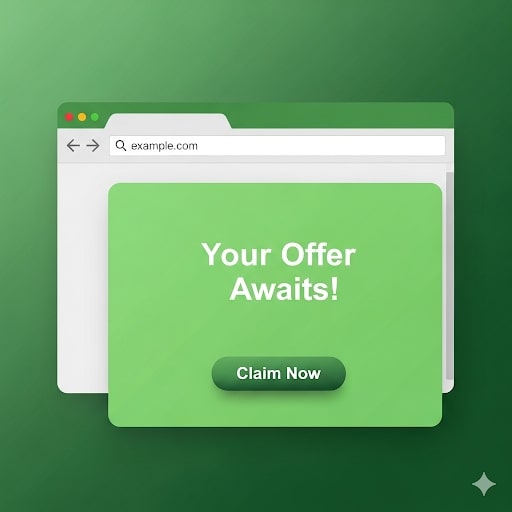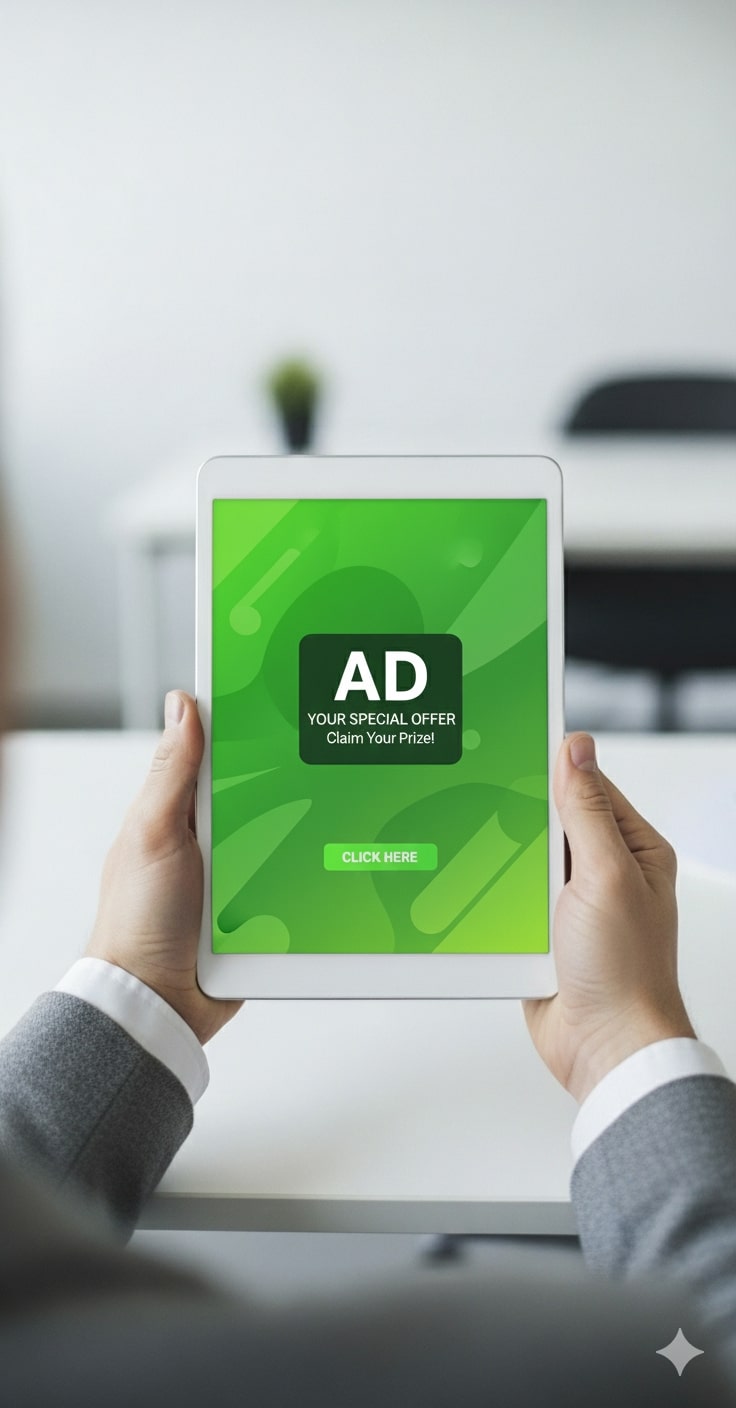Best Pop Ads to Drive Traffic and Conversions
Pop ads are a direct way to buy visits at scale. This guide shows how the format works, how pricing maps to profit, and how to launch a clean 7‑day test that protects budget while you learn. Read it top to bottom or jump to the launch plan and work backwards.
Learn MoreWhat Pop Ads Are (and How They Behave)
You’ve seen them before; here we define them precisely so the rest of the guide makes sense.
Pop advertising covers two close ad formats: popup and popunder ads. A popup takes focus immediately over the page. But what is a popunder ad? Popunders open under it and wait until the user switches tabs or closes the current one.
Networks trigger both with simple scripts on load, click, or close—the exact trigger depends on the site and browser policies. Because what opens is a full page, the landing itself does the persuasion: headline, first paragraph, and CTA decide your economics.
In practice that means you buy visits, not just impressions, and you win with page clarity and fast load, not image tricks.


Pricing & Profit Math (Popunder CPM, SmartCPM, CPV)
Before you run tests, you need to know what you’re paying for and how to avoid overbidding.Most networks sell pops on CPM: you pay per 1,000 opens. Many add SmartCPM: you set a max and the auction clears you at the minimum needed per source. Some ecosystems label the same thing CPV, because an “impression” here is a full page view—a visit to your lander. The label changes, the economics don’t.
Treat a pop “impression” as a visit. That’s why CTR isn’t your lever. You win with conversion rate and source quality. Start with bids near the network’s recommended CPM for your GEO and device. That setting helps you enter enough auctions to learn quickly without overpaying. Use any public CPM ranges only as anchors, because real rates move with GEO, device, and competition. Your job is simple: buy below break‑even and let source quality drive scale.
Here’s how it plays out in numbers. If CR is 0.6% and your target CPA is $4, break‑even CPM is 1000 × 0.006 × 4 = $24. If CR is 1.2% at a $3 target, break‑even CPM is $36. Flip the eCPA formula to sanity‑check bids: at $8 CPM and 0.8% CR, eCPA ≈ 8 ÷ (1000 × 0.008) = $1 — plenty of room if your target is $3.
A quick note on frequency from both sides of the market. Marketer‑friendly setups start around one visit per user per day to protect attention and conversion quality. Publisher defaults can be far higher because they optimize RPM, not your CPA. Read those knobs in context and cap for quality while you learn.
Frequency Capping & Dayparting
Control exposure first, then scale. Here's how to keep quality while you learn. Set frequency like a marketer, not like a publisher.
Your goal is conversion quality, so start with roughly one visit per user per day. That cap protects attention and keeps learning data clean. Publisher defaults can be much higher—those settings are designed to maximize RPM for site owners, not your CPA.
Hold that baseline for the first 1–2k visits so you can see conversion patterns by zone. If eCPA sits comfortably under target and user feedback stays quiet, widen the window in steps on a whitelist only. If quality drops, revert. If eCPA rises everywhere but bounce stays low, fix friction on the page before you raise bids or caps.
Dayparting is about catching attention when the offer makes sense. Start with local prime time for your category: evenings for entertainment, daytime for utilities and services, business hours for lead gen that needs a call back. Lock a simple schedule for a few days, find the windows that hold eCPA, and move budget into them. Revisit weekly; good windows drift with events and seasonality.
Starter daypart templates to test first.
- Entertainment: 18:00–23:00 local.
- Utilities/Apps: 10:00–18:00.
- Lead gen with callbacks: business hours.
Don't confuse click goals with visit goals. In pop traffic an impression is a visit, so frequency changes how people experience your page. If raising frequency pushes eCPA up, simplify the first screen, shorten the form, or insert a short qualifier quiz. Only then touch schedule or bids again.

Here is Your 7‑Day Launch Plan
This plan gives you enough signal to make decisions without burning budget.
Day 0: Wire tracking, pass the click/zone ID, set a server‑to‑server postback, and fire a test conversion. Set SmartCPM near the network's recommended bid.
Days 1–2: One GEO and one device. Cap at 1 visit/day. Let 1–2k visits run to see patterns by zone.
Days 3–4: Prune the obvious losers. If eCPA is high everywhere, fix the lander first; add a short qualifier pre‑lander if intent is cold.
Days 5–6: Build a whitelist of stable zones under break‑even CPM math. Duplicate to a whitelist campaign with slightly higher bids.
Day 7: Widen carefully: add the other device in the same GEO or a nearby GEO allowed by the offer. Keep the learning campaign small to keep discovering new winners.
Best Pop Ads Verticals
Dating
High intent traffic with good conversion rates for dating offers and apps.
iGaming/Betting
Gambling and betting verticals with high revenue potential and engaged users.
Sweepstakes/Contests
Prize-winning campaigns with high volume and good conversion rates.
VPN/Antivirus/Utilities
Security and utility apps with consistent performance and reliable traffic.
How to Optimize & Scale Your Pop Ads?
Let a shortlist of zones hold eCPA under target for several days, then move spend from learning to execution. Keep the learning campaign broad and cheap; run your whitelist in a separate campaign with tighter targeting and slightly higher bids.
Work source by source. Review performance at the zone level every day while you learn. Pause zones that burn through a meaningful sample with no conversions or clearly weak engagement. Promote zones that stay below your eCPA target with stable volume; give them headroom first. If results collapse everywhere at once, don't chase bids—check tracking and the landing page.
Use SmartCPM as a steering wheel, not a lever to floor. Start near the ad network's recommendation to win enough auctions; once a zone proves profitable, raise the max in small steps. Avoid across‑the‑board increases. Bid by GEO, device, and zone tiers so winners get room and weak sources don't eat budget.
Create simple rules that pause a zone after a set number of visits without conversions, or when eCPA sits above target long enough to be confident it's not variance. Simple rules you can use: pause zone after N visits with CR < X or eCPA > target; boost +10–20% when eCPA stays 20% under target for M visits, daypart off low‑response hours.
If conversion rate falls 30–40% from the first‑week baseline or eCPA creeps up on the whitelist, keep the angle and change the surface. If cold traffic stalls, try a short qualifier pre‑lander and measure again before touching bids.
Track subIDs or zone IDs, device, OS, browser, and daypart. Compare EPC to eCPA and let that ratio tell you where to buy more and where to stop. Make early pruning decisions after a few hundred visits when the signal is obvious; promote sources after you've seen repeatable performance over several days.
Raise daily caps on the whitelist, duplicate the winning setup to the other device in the same GEO, then to adjacent GEOs where your offer is allowed. When the funnel is proven, test premium supply at conservative bids.

Best Pop Ads GEOs in 2025
Now that your tracking is solid, pick markets where pops usually shine and where your offer is allowed.
Where pops usually shine.
Dating — obvious value, light signup, add age‑gate.
iGaming/Betting — event‑driven hooks and a clear welcome bonus.
Sweepstakes/Contests — quiz/spin pre‑landers to qualify.
VPN/Antivirus/Utilities — problem → solution lines and fast handoff.
Finance lead gen — lower perceived risk, visible disclosures.
Start where your partner has volume and your offer is allowed. Tier‑2/3 regions are often cheaper and give you fast signal; Tier‑1 brings paying users once the funnel is proven. Split mobile and desktop when behavior diverges. Mobile delivers reach and quick feedback; desktop can carry heavier flows like downloads or longer forms. Adjust bids and dayparting by device as soon as the patterns appear.
Always check local rules before you scale. Gambling, parts of finance, and some health‑related offers are sensitive. If in doubt, add an age gate, tighten copy, and pick conservative frequency while you learn.
What About Compliance & UX in Pop Ads?
Keep it legal and user‑friendly: compliance and UX are conversion levers, not afterthoughts, so use them to build trust and lift CR.
Treat compliance as part of conversion, not a separate chore. People convert when they trust what they see and understand what happens next. Say what the offer does, who it is for, and what the click triggers.
Do not simulate system dialogs or security alerts. Do not promise guaranteed outcomes, instant winnings, or fixed returns. If you run sweepstakes, state eligibility, prize odds where required, and how winners are contacted. In finance, avoid words that imply approval; explain what the user submits and how you use it. In health or utility flows, describe benefits without diagnosing or prescribing.
Plan for ad‑blocking variability. Some users will not see a pop at all; others will. That is normal.
Clear language, visible terms, honest prompts—also raise conversion. When in doubt, simplify the first screen and make the next step obvious. The more predictable the flow, the cheaper the acquisition becomes over time.
Conclusion
You're buying visits, not banner views. Pop ads turn impressions into visits, so your landing page and source quality decide the outcome. Start with a conservative cap and a recommended bid, collect 1–2k visits, and let the math steer your pruning and bids. Build a whitelist, refresh the page when CR dips, and scale only when eCPA stays under target. That's how you turn pop traffic into predictable revenue in 2025.
Buy pop ads